| 1 YEAR (Block C) |
1 semester | 6 CFU |
| (from ICT Internet Engineering) | |
| Prof. Gaetano MARROCCO |
A.Y. 2024-25 |
| Code: 8039528 SSD: ING-INF/02 |
(prerequisite: ELECTROMAGNETIC FIELDS)
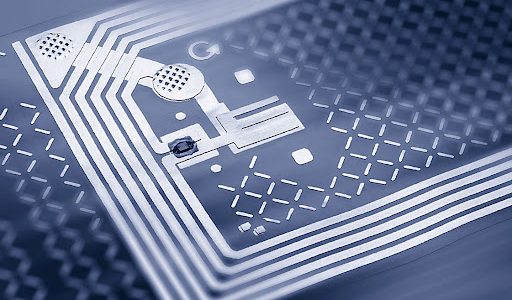
| 1 YEAR (Block C) |
1 semester | 6 CFU |
| (from ICT Internet Engineering) | |
| Prof. Gaetano MARROCCO |
A.Y. 2024-25 |
| Code: 8039528 SSD: ING-INF/02 |
(prerequisite: ELECTROMAGNETIC FIELDS)
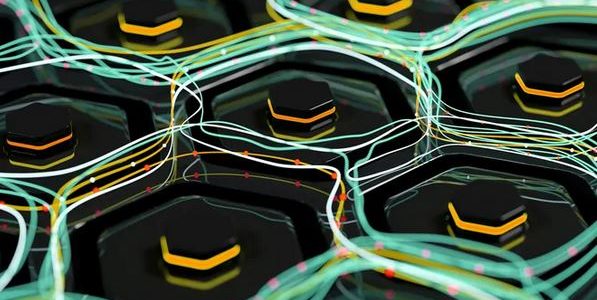
| 1 YEAR (Block C2) |
1 semester | 6 CFU |
| Prof. Fabio Matteocci |
A.Y. 2024-25 (new) program 📑 |
| Code: 80300150 SSD: ING-INF/01 |
The course requires a basic knowledge of nanotechnologies applied to the generation and storage of electric power, as well as a basic understanding of the functioning of solar cells and batteries.
FORMATIVE OBJECTIVES
LEARNING OUTCOMES:
The main objectives of the course are the study of electric power generation and storage systems that can be implemented on vehicles. The lessons, therefore, focus on next-generation photovoltaics, thin-film deposition techniques, storage systems, supercapacitors, and thermoelectricity. The generation and storage technologies will then be studied from an application perspective through case studies.
KNOWLEDGE AND UNDERSTANDING:
Students will be able to:
a) To learn the working principles for energy generation and storage (EGS);
b) To understand and explain the solutions for EGS when applied in vehicles;
c) To solve simple problems concerning the use of design of integrated EGS systems;
d) To know how to design, develop and release a simple EGS system for vehicle integration.
APPLYING KNOWLEDGE AND UNDERSTANDING:
The student will be able to recognize the applicability areas for the various EGS systems. She/He will also be able to apply the knowledge and understanding developed during the course to study and understand recent literature.
MAKING JUDGEMENTS:
Students should be capable of identifying specific design scenarios and applying the most appropriate techniques for EGS. Additionally, they should be able to compare the effectiveness of various EGS systems while evaluating their advantages and disadvantages.
COMMUNICATION SKILLS:
The student will be able to clearly and unequivocally communicate the course content to specialized interlocutors. He will also be able to communicate the main approches to the development of EGS systems. The student will also have a sufficient background to undertake a thesis/research work in EGS applications.
LEARNING SKILLS:
Being sufficiently skilled in the specific field to undertake subsequent studies characterized by a high degree of autonomy.
SYLLABUS
1. Introduction on Nanotechnology: Top Down and Bottom Up Approaches2. Physical, Chemical Deposition, Solution Processing (Working Principle and Applications) 3. Energy Generation: Conventional and Emergent Photovoltaics (Working Principle and Applications).
4. Case of Study: Perovskite solar Cells (Working Principle, Deposition Techniques and applications)
5. Storage: Conventional and Emergent technologies for Batteries
6. Electrical and Chemical Properties of Batteries (Working Principle)
7. System Integration of Energy Generation and Storage solutions
8. Opportunities and Limitations of vehicle-integrated solutions for Generation and Storage 9. Beyond Batteries: Supercapacitors and thermoelectricity
The lecture will be held in the classroom with the projection of slides that will be released to the students at the end of the lecture.
The student will only be admitted to the final exam if they have attended 80% of the course hours.

| 2 YEAR | II semester | 6 CFU |
Eugenio Martinelli |
A.Y. 2024-25 new – program 📑 |
| Didatticaweb | |
| Code: SSD: ING-INF/01 |
PREREQUISITES
Basic knowledge of probability theory, signal theory, and pattern recognition.
FORMATIVE OBJECTIVES
LEARNING OUTCOMES:
Learning the basic concepts of deep learning algorithms. The main Machine Learning algorithms will be covered, followed by a focus on those related to deep learning, with particular emphasis on their application in the field of mechatronics.
KNOWLEDGE AND UNDERSTANDING:
The student acquires knowledge related to the field of Machine Learning, with particular reference to the ability to extract quantitative and qualitative information from images and videos and multivariate data and their subsequent processing for regression and classification tasks.
APPLYING KNOWLEDGE AND UNDERSTANDING:
The student acquires the capability to implement the algorithms in Matlab through dedicated lessons during the course to the aim of being able to autonomously develop new codes for the solution of specific problems in different application fields.
MAKING JUDGEMENTS:
The student must be able to integrate the basic knowledge provided with those deriving from the other courses, such as probability, signal theory, and pattern recognition.
COMMUNICATION SKILLS:
The student develops a project in Matlab that illustrates during the oral exam. The project can be done in groups to demonstrate working group capabilities.
LEARNING SKILLS:
Students will need to be able to read and understand scientific texts and articles in English for in-depth exploration of the topics covered. They should also independently expand their knowledge of the subject to include topics not directly addressed in the course, particularly those connected with the rapid technological developments in the field of Deep Learning and, more generally, in machine learning.
SYLLABUS
Today, deep neural networks surpass traditional hand-crafted algorithms and match human performance in various complex tasks, including image recognition, natural language processing, and prediction models. This course offers a comprehensive introduction to neural networks (NNs), covering traditional feedforward (FFNN) and recurrent (RNN) neural networks, as well as the most advanced deep-learning models like convolutional neural networks (CNN), Variational Autoencoders, and Diffusion models.
The primary objective of the course is to equip students with the theoretical knowledge and practical skills needed to understand and utilize neural networks (NN), while also familiarizing them with deep learning techniques for solving complex engineering challenges.
This goal is pursued in the course by:
• Describing the most important algorithms for NN training (e.g., backpropagation, adaptive gradient algorithms, etc.)
• Illustrating the best practices for successful training and using these models (e.g., dropout, data augmentation, etc.) in a practical session using a phyton environment.
• Providing an overview of the most successful Deep Learning architectures (e.g., convolutional networks, autoencoder for embedding, diffusion models, etc.)
• Providing an overview of the most successful applications with particular emphasis on models for solving visual recognition tasks.
TEXTS
Pattern recognition and machine learning, Christopher Bishop.
Deep Learning, Ian Goodfellow et al.
– slides of the professor
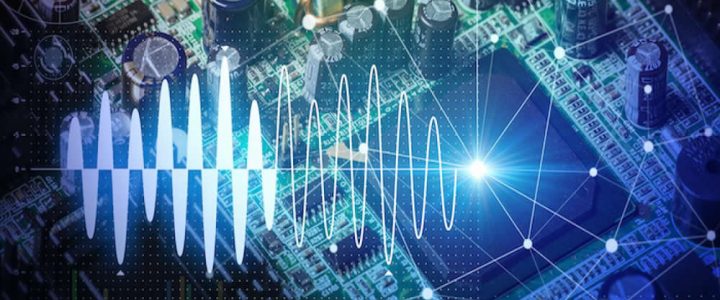
| 1 YEAR | II semester | 6 CFU |
| Christian Falconi | A.Y. 2022-23 (since) |
| since A.Y. 2023-24 (new block E) – program | |
| Code: 80300103 SSD: ING-INF/01 |
LEARNING OUTCOMES:
The goal is to teach the fundamental principles and tools for designing electronic interfaces.
The contents of the course have general validity, but the focus will be on electronic interfaces for mechatronics.
The course is oriented toward design.
KNOWLEDGE AND UNDERSTANDING:
Students will need to know and understand the fundamental principles and tools for the analysis and design of electronic interfaces.
APPLYING KNOWLEDGE AND UNDERSTANDING:
Students will have to demonstrate that they are able to design electronic interfaces.
MAKING JUDGEMENTS:
Students will be able to evaluate the design of electronic interfaces.
COMMUNICATION SKILLS:
The students, in addition to illustrating the fundamental principles and tools for the design of electronic interfaces, must be able to explain each design choice.
LEARNING SKILLS:
Students must be able to read and understand scientific texts and articles (also in English) concerning electronic interfaces.
Thévenin equivalent circuit.
Norton equivalent circuit.
Laplace transform
Fourier transform
Fundamentals on electronic devices.
Equivalent circuits (mechanic systems, thermal systems,…).
Diode circuits.
Transistor circuits.
Nullors.
Operational amplifiers (op amps).
Universal active devices.
Non-idealities of op-amps and other universal active devices.
Op-amp circuits.
Simulations of electronic circuits (SPICE).
Electronic interfaces.
Circuits for mechatronics (design examples).

| 1 YEAR | I semester | 6 CFU |
| Mauro De Sanctis | ICT and Internet Engineering (6 of 9) |
| A.Y. 2023-24 | |
| Didatticaweb
Code: 80300052 |

| 1 YEAR | I semester | 6 CFU |
| Tommaso Rossi (3cfu)
Cesare Roseti (3cfu) |
ICT and Internet Engineering |
| since A.Y. 2023-24 program 📑 | |
| Code: SSD: ING-INF/03 |
FORMATIVE OBJECTIVES
The course module provides an overview of the technologies involved in the multimedia application evolution from analogue to digital, from linear television to video on demand. To this aim, the module addresses the main TV standards, the TCP/IP protocols involved in modern streaming services, the network architectures and the different service modes.
PREREQUISITES: A good background in TCP/IP protocols.
SYLLABUS:
PARTE I – Digital TV standards, MPEG-2 and Transport Stream, IP encapsulation over DVB.
PARTE II – IP multicast, IGMP, IP multicast routing
PARTE III – Transport protocols for IP multimedia applications; Video streaming applications and CDN, the multimedia protocol stack, RTP and RTCP, multimedia signalling protocols: RTSP, SDP and SIP, Key Performance Indicators.
PARTE IV -Adaptive Streaming over HTTP, MPEG-DASH, Support to multimedia applications over 5G.

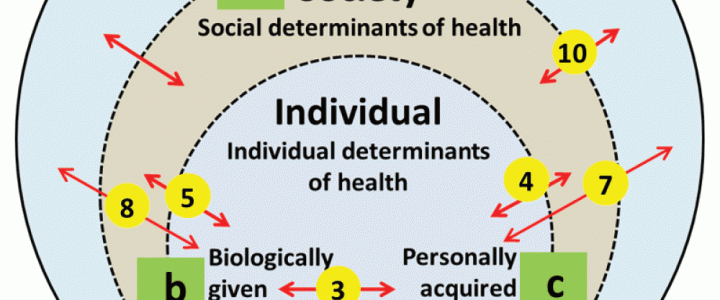
| 2 YEAR | II semester | 6 CFU |
| Patrizio Tomei (4cfu) Eugenio Martinelli (2cfu) |
A.Y. 2023-24 |
| SANTOSUOSSO Giovanni Luca | A.Y. 2024-25 not be activated |
| A.Y. 2025-26 (new name “Identification and Neural Networks” |
|
| Didatticaweb | |
| Code: 80300088 SSD: ING-INF/04 |
Pre-requirement: The basics of systems theory and control are required.
LEARNING OUTCOMES: The course aims to provide the basic techniques for the design of predictors, filters, and adaptive controllers.
KNOWLEDGE AND UNDERSTANDING: Students must obtain a detailed understanding of design techniques with the help of MATLAB-SIMULINK to solve industrial problems of adaptive filtering, adaptive prediction, and adaptive control.
APPLYING KNOWLEDGE AND UNDERSTANDING: Students must be able to apply the project techniques learned in the course even in different industrial situations than those examined in the various phases of the course.
MAKING JUDGEMENTS: Students must be able to apply the appropriate design technique to the specific cases examined, choosing the most effective algorithms.
COMMUNICATION SKILLS: Students must be able to communicate using the terminology used for filtering, prediction, and adaptive control. They must also be able to provide logical and progressive exposures starting from the basics, from structural properties, from modeling to the design of algorithms, without requiring particular prerequisites. Students are believed to be able to understand the main results of a technical publication on the course topics. Guided individual projects (which include the use of Matlab-Simulink) require assiduous participation and exchange of ideas.
LEARNING SKILLS: Students must be able to identify the appropriate techniques and algorithms in real cases that arise in industrial applications. Furthermore, it is believed that students have the ability to modify the algorithms learned during the course in order to adapt them to particular situations under consideration.
Texts
Adaptive Filtering Prediction and Control, Graham C. Goodwin, Kwai Sang Sin, Dover Publications, 2009.
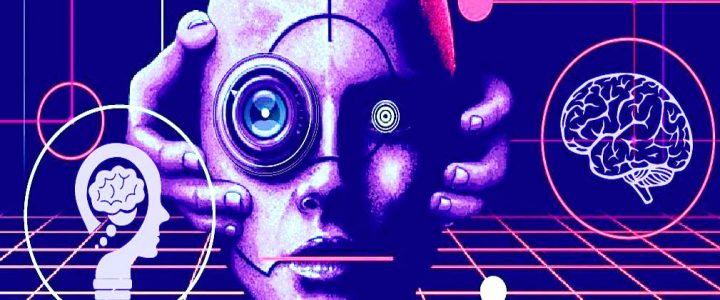
| 2 YEAR | II semester | 6 CFU |
| Arianna Mencattini | A.Y. 2021-22
A.Y. 2022-23 |
| A.Y. 2023-24 Measurement Systems for Mechatronics
A.Y. 2024-25: Computer Vision – program |
|
| Code: 8039787 SSD: ING/INF/07 |
LEARNING OUTCOMES: Learning basic concepts in digital image processing and analysis as a novel measurement system in biomedical fields. The main algorithms will be illustrated particularly devoted to the image medical fields.
KNOWLEDGE AND UNDERSTANDING: The student acquires knowledge related to the possibility to use an image analysis platform to monitor the dynamics of a given phenomenon and to extract quantitative information from digital images such as object localization and tracking in digital videos.
APPLYING KNOWLEDGE AND UNDERSTANDING: The student acquires the capability to implement the algorithms in Matlab through dedicated lessons during the course with the aim of being able to autonomously develop new codes for the solution of specific problems in different application fields.
MAKING JUDGEMENTS: :
The student must be able to integrate the basic knowledge provided with those deriving from the other courses such as probability, signal theory, and pattern recognition. some fundamentals of measurement systems as well as basic metrological definitions will be provided in support of background knowledge.
COMMUNICATION SKILLS:
The student solves a written test and develops a project in Matlab that illustrates during the oral exam. The project can be done in a group to demonstrate working group capabilities.
LEARNING SKILLS:
Students will be able to read and understand scientific papers and books in English and also to deepen some topics. In some cases, students will develop also experimental tests with time-lapse microscopy acquisition in the department laboratory.
SYLLABUS:
Fundamentals of metrology. Basic definitions: resolution, accuracy, precision, reproducibility, and their impact over an image based measurement system. Image processing introduction. Image representation. Spatial and pixel resolution. Image restoration. Deconvolution. Deblurring. Image quality assessment. Image enhancement. Image filtering for smoothing and sharpening. Image segmentation: pixel based (otsu method), edge based, region based (region growing), model based (active contour, Hough transform), semantic segmentation. Morphological operators. Object recognition and image classification. Case study: defects detection, object tracking in biology, computer assisted diagnosis, facial expression in human computer interface.
Matlab exercises.

| 1 YEAR | I semester | 6 CFU |
| Marco Re |
since A.Y. 2021-25 |
| A.Y. 2025-26 – program 📑 | |
| Didatticaweb
Code: 80300061 |
PREREQUISITES
CIRCUIT THEORY, PHYSICS, MATHEMATICAL ANALYSIS
FORMATIVE OBJECTIVES
EDUCATIONAL OBJECTIVES:
The objective of this course is to provide students with the knowledge for the analysis and synthesis of the electronic systems presented during the course and the means for their resolution. The course has both theoretical and practical character, it is therefore important that the student is able to carry out concrete problems, such as those presented during the exercises.
KNOWLEDGE AND UNDERSTANDING:
Students will learn the analysis techniques used in the analysis of electronic systems in different operating regimes, and acquire the necessary knowledge to carry out circuit simulations through different software.
ABILITY TO APPLY KNOWLEDGE AND UNDERSTANDING: students will be able to evaluate which of the existing methods has to be used to analyze and synthesize the system under consideration with the aim of simplifying the resolution of the problem. Finally, they will be able to apply the software presented to perform the analysis of electronic systems in different operating regimes.
COMMUNICATION SKILLS:
The verification methods implemented will lead the students to 1) know how to quickly choose the methodology to be adopted for solving the proposed problems, and 2) be able to illustrate in a synthetic and analytical way the topics covered by the course using equations and schemes .
LEARNING SKILLS and AUTONOMY OF JUDGMENT:
With the didactic material presented during the course (both written and video) and the list of bibliographic references proposed by the teachers, students have the opportunity to autonomously expand their knowledge on the subject by integrating topics not directly addressed in the course.
SYLLABUS
Specification of Combinational Systems: definitions and specification level, data representation and coding, binary specification of combinational systems.
Combinational Integrated Circuits – Characteristics and Capabilities: representation of binary variables, structure and operation of CMOS gates, propagation delays, voltage variations and noise margins, power dissipation and delay-power product, Buses and three-state drivers, circuit characterization of a CMOS-family.
Description and Analysis of Gate Networks: definition, description and characteristics, sets of gates.
Design of Combinational Systems – two-level gate networks: minimal two-level networks, Karnaugh maps, minimization of sum of products and product of sums, design of multiple-output two-level gate networks, two-level NAND-NAND and NOR-NOR networks, limitations of two-level networks, programmable modules: PLA and PLA.
Design of Combinational Systems – Multilevel Gates Networks:
Transformations, alternative implementations, networks with XOR and XNOR gates, and networks with two-input multiplexers.
Specification of Sequential Systems: synchronous sequential systems, representation of the state transition and output functions, time behavior and finite state machines, finite memory sequential systems, controllers, equivalent sequential systems and minimization of the number of states, binary specification of sequential systems, specification of different types of sequential systems.
Sequential Networks: canonical form, high-level and binary implementations, gated latch and D flip-flop, timing characteristics, analysis of canonical sequential networks, design of canonical sequential networks, other flip-flop modules: SR, JK, T, analysis of networks with flip-flops, design using special state assignments.